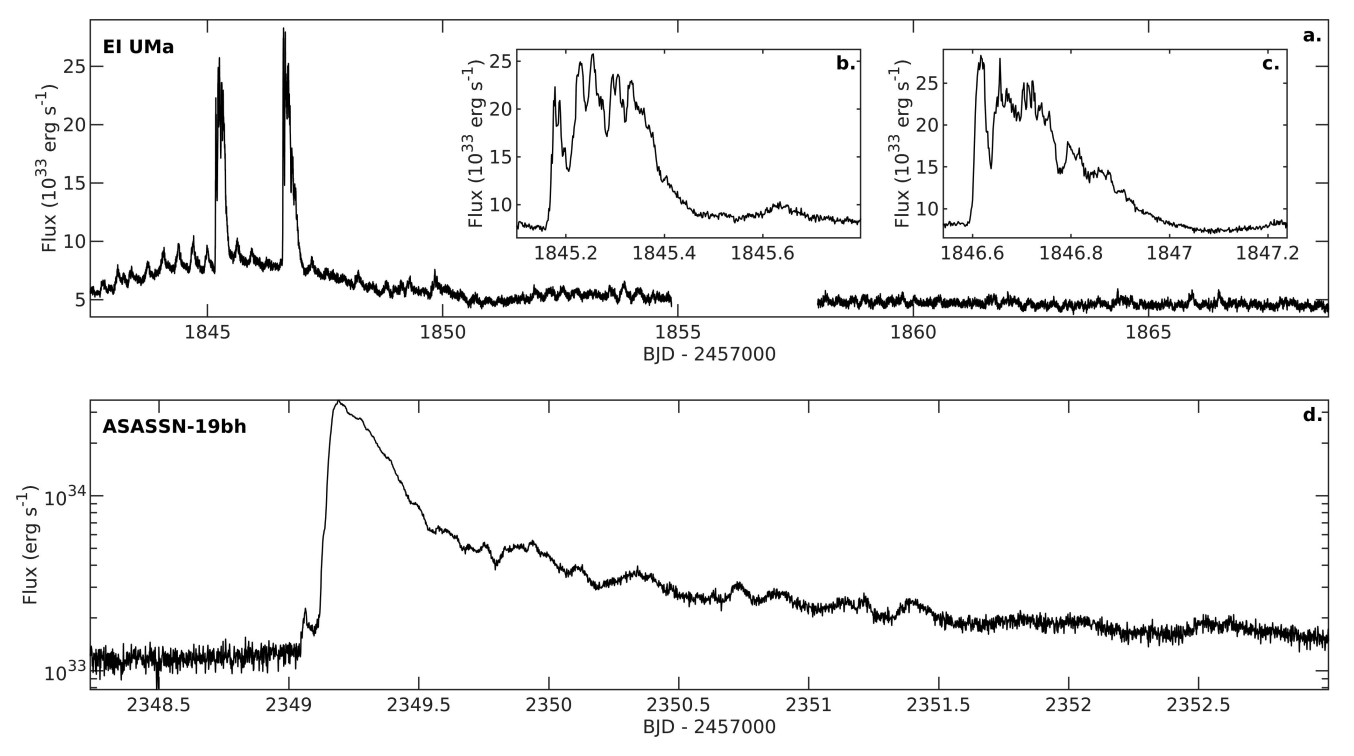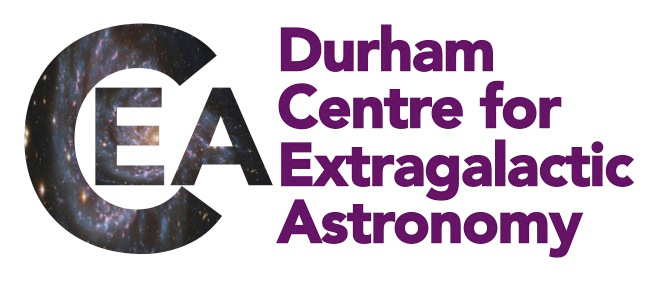CEA News, April 2022
Localized thermonuclear bursts from accreting magnetic white dwarfs
Nova explosions are caused by global thermonuclear runaways triggered in the surface layers of accreting white dwarfs1-3. It has been predicted4-6 that localized thermonuclear bursts on white dwarfs can also take place, similar to type-I X-ray bursts observed in accreting neutron stars.
 Figure 2 in the paper, showing optical brightness variations in EI UMa and ASASSN−19bh.
Figure 2 in the paper, showing optical brightness variations in EI UMa and ASASSN−19bh.
Unexplained rapid bursts from the binary system TV Columbae, in which mass is accreted onto a moderately strong magnetised white dwarf from a low-mass companion, have been observed on several occasions in the past. During these bursts the optical/UV luminosity increases by a factor of > 3 in less than an hour and fades over approximately 10 hours. Fast outflows have been observed in UV spectral lines, with velocities greater than 3500 km per second, comparable to the escape velocity from the white dwarf surface. A paper led by CEA astronomers reports on optical bursts observed in TV Columbae as well as in two additional accreting systems, EI Ursae Majoris and ASASSN−19bh. The bursts have a total energy ≈ 10−6 those of classical nova explosions (“micronovae”), and bear a strong resemblance to Type I X-ray bursts. This work exclude accretion or stellar magnetic reconnection events as their origin and suggest thermonuclear runaway events in magnetically-confined accretion columns as a viable explanation.

The identification and characterisation of rapid bursts in three AWDs have unveiled that magnetically confined TNRs may occur in the surface layers of white dwarf atmospheres. Similar bursts to those reported here have also been reported in the literature for other magnetic AWDs and it may be that localised TNRs on AWDs are more common than previously thought. Further observations of similar bursts across the electromagnetic spectrum, as well as detailed theoretical modelling of localised TNRs, are necessary to determine what truly triggers these events.

